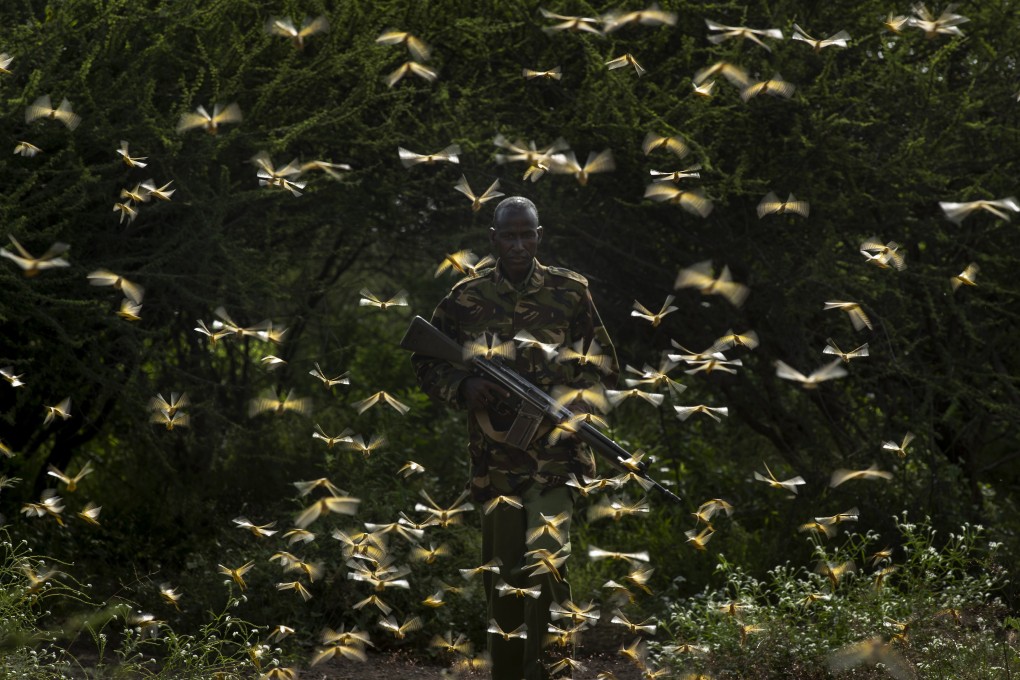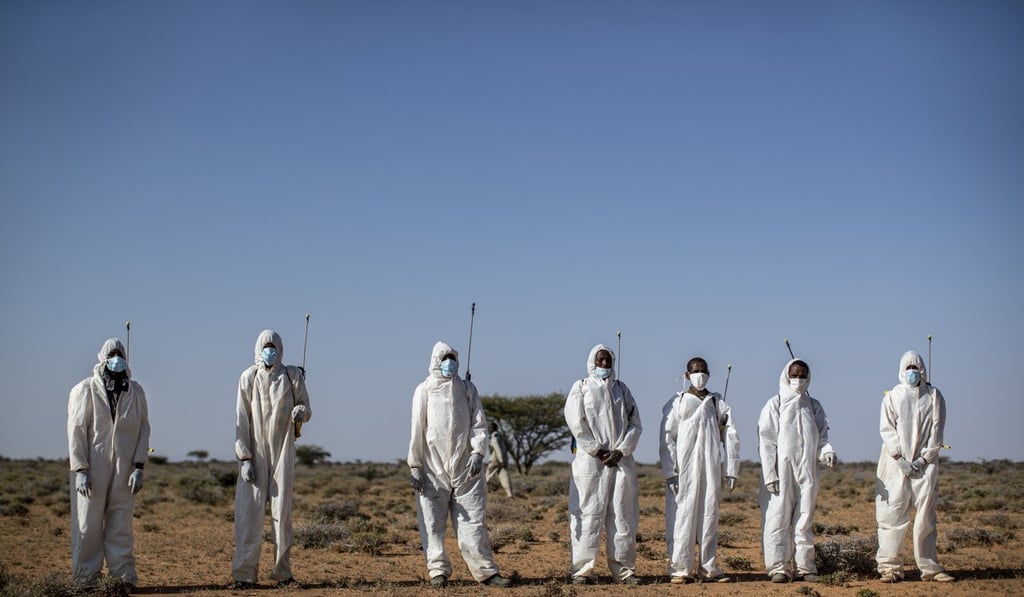Plague fears as massive East Africa locust outbreak spreads
- Swarms of locusts have devastated food supplies in Kenya, Ethiopia and Somalia. They were reported in Uganda on Sunday
- Current upsurge could become a plague if outbreak isn’t contained

Uganda scrambled to respond to the arrival of the biggest locust outbreak that parts of East Africa have seen in decades, while the United Nations warned that “we simply cannot afford another major shock” to an already vulnerable region.
An emergency government meeting hours after the locusts were spotted inside Uganda on the weekend decided to deploy military forces to help with ground-based pesticide spraying, while two planes for aerial spraying will arrive as soon as possible, a statement said. Aerial spraying is considered the only effective control.

The swarms of billions of locusts have been destroying crops in Kenya, which hasn’t seen such an outbreak in 70 years, as well as Somalia and Ethiopia, which haven’t seen this in a quarter-century. The insects have exploited favourable wet conditions after unusually heavy rains, and experts say climate change is expected to bring more of the same.
Keith Cressman, the UN Food and Agriculture Organisation’s (FAO) senior locust forecasting officer, said Kenya has received “waves and waves of swarms” since the beginning of the year from the Horn of Africa, and “over the weekend they moved on the side of Mount Kilimanjaro across the border into Tanzania.”
“Also over the weekend they moved into northeastern Uganda,” he told a news conference at UN headquarters in New York.